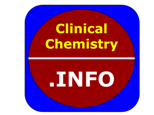Clin Chem Lab Med. 2025 Mar 13. doi: 10.1515/cclm-2024-1503. Online ahead of print.
ABSTRACT
OBJECTIVES: Risk-based stratification approaches using measurable residual disease (MRD) successfully help to identify T-acute lymphoblastic leukemia (T-ALL) patients at risk of relapse, whose treatment outcomes are very poor. Because of T-ALL heterogeneity and rarity, a reliable and standardized approach for flow cytometry (FC)-based MRD measurement and analysis is often missing.
METHODS: Within the international AIEOP-BFM-ALL-FLOW study group we made a consensus on markers and a standard operating procedure for common 8- and 12-color T-ALL MRD panels. Custom manufactured tubes with dried backbone antibodies were tested in parallel to local FC standards.
RESULTS: Altogether, 66 diagnostic and 67 day 15 samples were analyzed. We designed two guided MRD gating strategies to identify blast cells in parallel to expert-based evaluation. We proved that the optimized tubes allowed the correct identification of blast cells in all diagnostic samples. Both, expert and guided analysis of day 15 samples correlated to local standard (Spearman R=0.98 and R=0.94, respectively). Only in 2 (3 %) and 4 (6 %) patients expert gating and guided analysis results were substantially discordant from local standard, respectively. The cases that require an individualized approach may be partially identified at diagnosis through a rare immunophenotype or mixed phenotype acute leukemia status.
CONCLUSIONS: Our work shows that standardized operating procedures together with guided analysis are applicable in a great majority of T-ALL cases. Further improvement of MRD detection is needed, as in some cases an individualized analytical approach is still required due to the challenging nature of the T-ALL phenotype.
PMID:40068909 | DOI:10.1515/cclm-2024-1503
